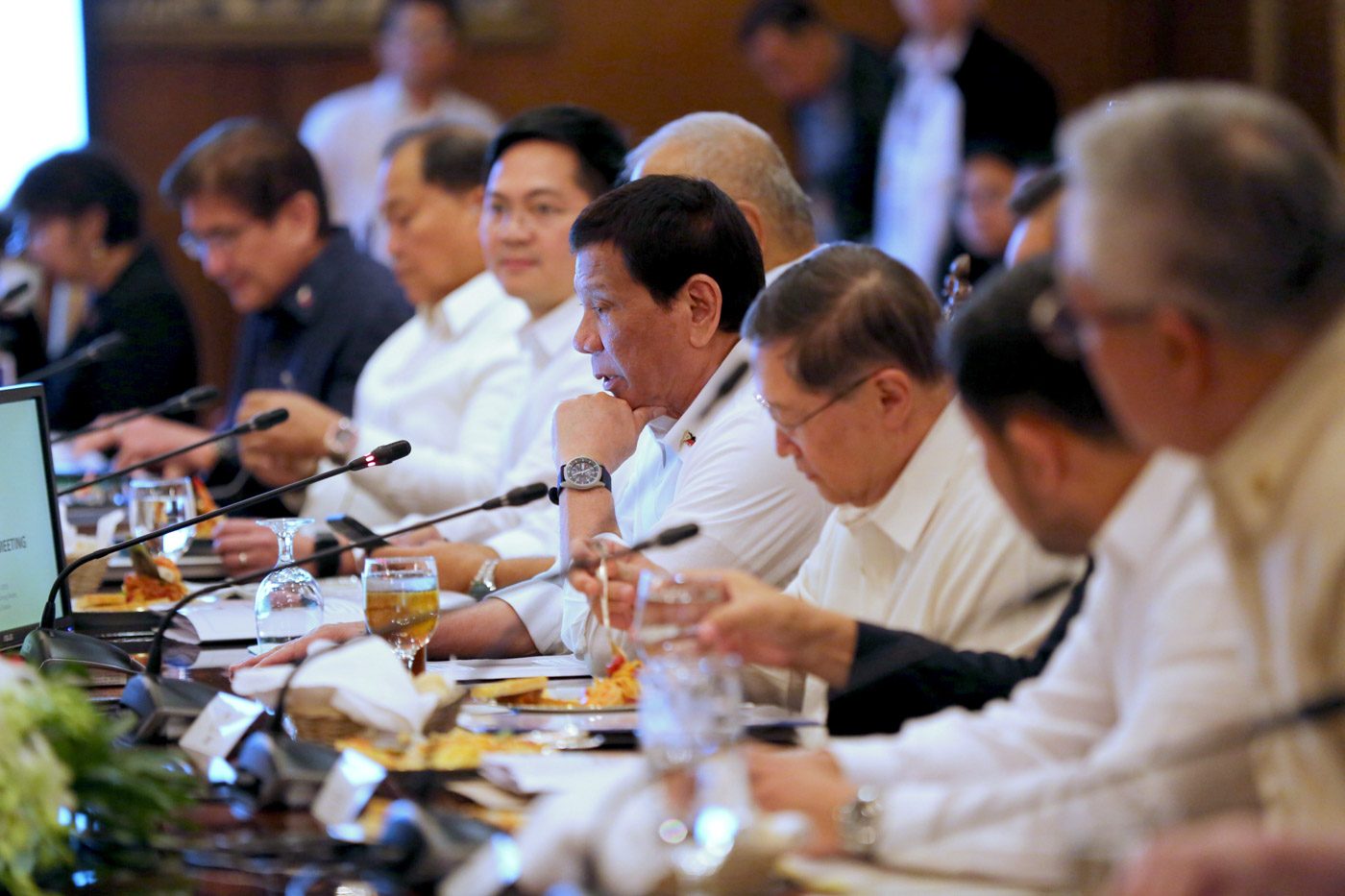SUMMARY
This is AI generated summarization, which may have errors. For context, always refer to the full article.

MANILA, Philippines – As he had promised earlier this year, President Rodrigo Duterte has issued an executive order tasking the government to adopt a cash budgeting system starting 2019.
Executive Order (EO) No. 91 was signed by Executive Secretary Salvador Medialdea, by order of the President, on September 9. A copy of the document was made public on Thursday, September 12.
The cash budgeting system is to be retroactively effective starting January 1 this year.
What’s a cash budgeting system? A cash-based budgeting system is supposed to promote fiscal discipline and better planning among agencies in spending or using their funds.
This means government agencies need to complete their contracts by the end of 2019, regardless of possible delays. Projects that are “not implementation-ready” will be removed from the proposed budget.
A cash-based budgeting system limits contractual obligations and disbursing payments to goods delivered and services rendered within the fiscal year.
The EO says:
- All authorized appropriations shall be available for obligation and disbursement only until the end of each fiscal year.
- Obligations incurred by the National Government within each FY shall be implemented during the same FY. Goods and services corresponding to said obligations shall be delivered or rendered, inspected and accepted by the end of each FY.
- Payments for obligations incurred shall be made until the end of the extended payment period (EPP) which shall be 3 months after the end of the validity of appropriations against which they were obligated, unless another period has been determined by the Department of Budget and Management, upon consultation with relevant agencies.
In the case of subsidies for local government units, these can be obligated and disbursed only until the end of the next FY. But appropriations for the statutory shares of LGUs will be available for obligation and disbursement until fully expended.
What happens to unreleased funds? The EO states that any unreleased appropriations and unobligated allotments at the end of the FY, and unpaid obligations and undisbursed funds at the end of the EPP “shall revert to the National Treasury and shall not thereafter be available for expenditure, except by subsequent legislative enactment.”
For local government subsidies, the reversion of funds will be done at the end of the next FY.
How about projects spanning multiple years? For projects that will take more than a year to implement, the DBM must issue a Multi-Year Contractual Authority (MYCA) before the start of procurement activities.
Early procurement. Government agencies can begin procurement activities before the fiscal year of the project’s implementation and while the General Appropriations Act for that year is pending, reads the EO.
How will government transition into the system this year? Appropriations for infrastructure, capital outlays, and subsidy releases to government corporations for infrastructure projects can be obligated until December 31. The completion of construction, inspection, and payment can be done until December 31, 2020.
Appropriations for maintenance and other operating expenses (MOOE) and other capital outlays can be obligated until December 21. But delivery, inspection, and payment must be done by June 30, 2020. – Rappler.com
Add a comment
How does this make you feel?
There are no comments yet. Add your comment to start the conversation.